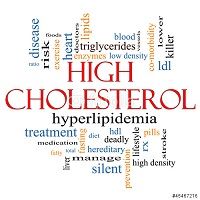Article
Does HDL Cholesterol Play a Role in AMD?
Author(s):
High-density lipoproteins have long been believed to play a role in the development of age-related macular degeneration. What about HDL?

High-density lipoproteins have long been believed to play a role in the development of age-related macular degeneration. But there has been conflicting information on whether AMD is associated with HDL-cholesterol levels.
Researchers at the Department of Ophthalmology at Medical University of Graz, Graz, Austria, reporting in PLOS found that serum HDL function showed no significant association is the exudative AMD.
“However we cannot exclude that alterations in locally produced HDL may be part of the AMD pathogenesis,” Laura Pertl and colleagues wrote.
Cholesterol maintenance in the retina is poorly understood. The team set out to find whether changes in the functionality of HDL, rather than serum HDL-cholesterol levels determine its protective activities.
Perhaps “dysfunctional HDL, characterized by a reduced ability to mobilize cholesterol and by impaired anti-oxidative and anti-inflammatory capacities” could be linked to the development of the disease.
The team analyzed blood from 29 patients with exudative AMD and 26 age-matched controls.
They found that the HDL-associated acute phase protein serum amyloid A (SAA) was significantly increased in AMD patients, while all other assessed apolipoproteins were not altered.
“HDL efflux capacity, anti-oxidate capacity and arylesterase activity were not different in AMD patients” compared to controls.
Further, the ability of apoB-depleted serum to inhibit monocyte NF-kB expression was significantly improved in AMD patients.
Lipoprotein-associated phospholipase A2 activity, a marker of vascular inflammation, was decreased in AMD subjects.
The team noted that it did not take genetic polymorphism into account in the study and that some of the genetic variants for AMD are also implicated in HDL function.





